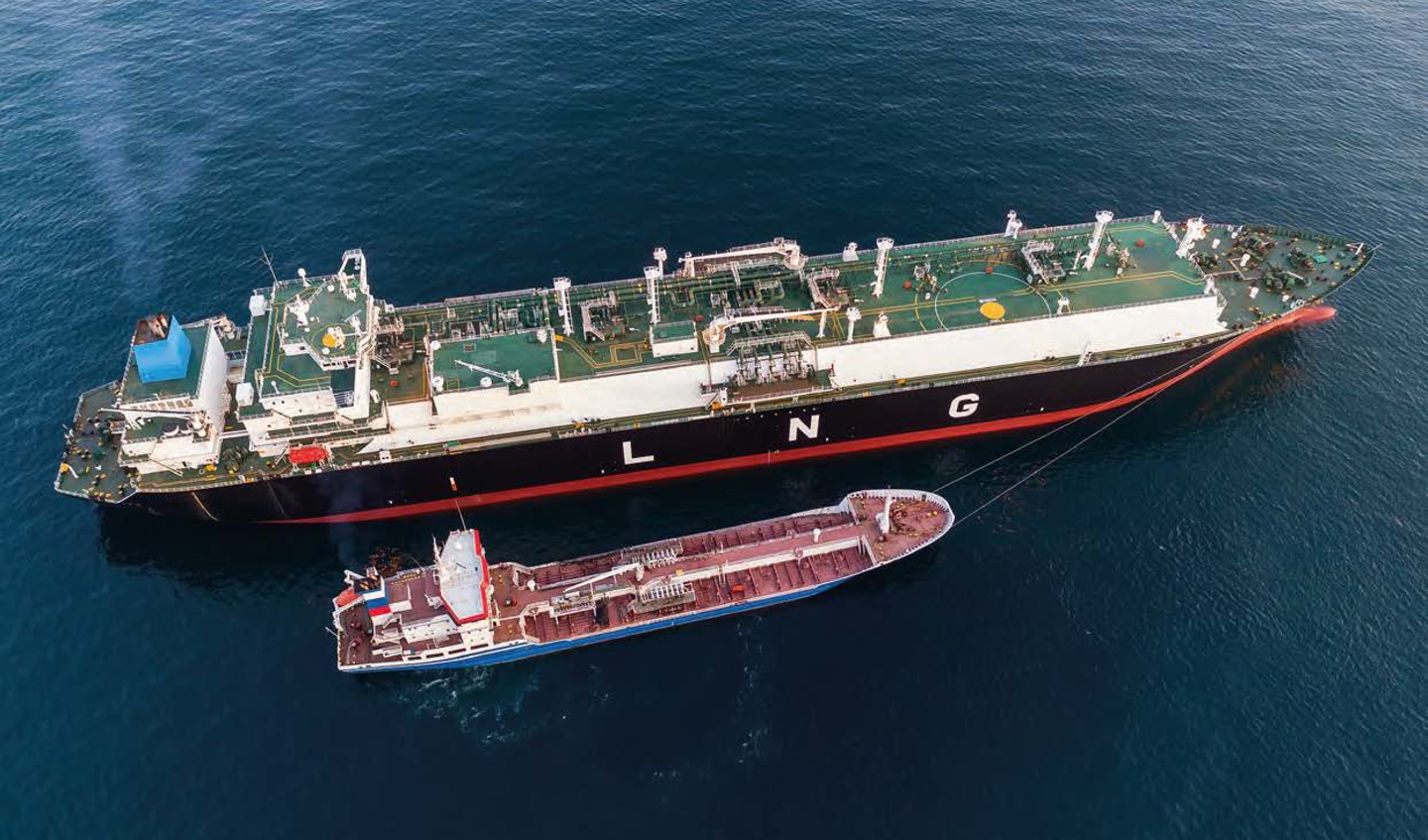Whilst still a hydrocarbon, energy generated from gas has the potential to become carbon‑neutral in the future. But the world is still missing the vital technology to monitor fuel emissions from well to consumer – Life Cycle Analysis is an essential tool in LNG’s transition journey.
They are also supporting initiatives that could see every LNG cargo consignment assigned not only a calorific content but also a label, detailing its emissions footprint.
Carbon is, of course, a major contributor to the world’s accelerating climate emergency. But methane is a far greater challenge. As a greenhouse gas (GHG), methane can be approximately 30 to up to 90 times more dangerous that carbon dioxide.
Now, proactive LNG traders and producers including Houston‑based Cheniere, Trafigura in Geneva, and Singapore’s Pavillion Energy are offsetting cargoes based on the Life Cycle Analysis of their gas production and supply chains. Eventually, it is quite possible that the entire gas supply chain could become carbon‑neutral.
So far, though, we lack the accurate monitoring, reporting and verification (MRV) systems that are needed for this immensely complex task. Some experts even question whether an accurate and reliable MRV setup across every link in the production and supply network, suitably validated, is even possible.
Calculating GHG impact
Tracking methane under certain conditions is not that difficult – elements of this can be tackled relatively easily using available technology. What is tricky, however, is monitoring and measuring the exact volume of methane emissions over the entire supply chain. Yet this information is essential if we are to be able to calculate the carbon intensity and GHG impact of a specific product or cargo.
In shipping circles, we consider unburnt methane in ships’ engines to be a major concern and, of course, it is an important issue. Engine designers and combustion experts are making great progress in reducing methane slip. Of course, we must not be complacent – the end objective is to eliminate methane slip entirely.
The process is well under way – in fact, methane slip can be offset with current technologies and certain combustion systems. Two‑stroke, high‑pressure, diesel‑technology engines, combined with power take‑off arrangements such as shaft generators, go a long way towards solving the problem. But other systems are under development that will tackle methane slip in existing engines as well as other engine combustion arrangements.
LR is involved in various slip‑related initiatives. We are collaborating with others on a joint project aiming at zero methane emissions onboard ships. We are also working on a proposal for the funded development and full‑scale proof of concept of technology specifically tackling the shipboard methane issue.
In an overall context, however, shipping’s contribution to methane emissions is a tiny fraction of one per cent. In fact, the International Energy Agency (IEA) estimates that only 13% of methane emissions come from the entire gas production process, including shipping and distribution. The remaining 87% of emissions are generated by industry generally, the agriculture and waste sectors in particular.
Capturing emission benefits
Ironically, it is here that some amazing opportunities become evident. The first of these is bio‑LNG, natural gas that is feedstock‑agnostic and can be produced from biomass created in agriculture or waste that is not part of the food chain. So, the methane that would have been emitted in raw form to the earth’s atmosphere is captured and used by the world’s gas sector as fuel.
Of course, there are many potential uses for this energy, but an obvious one is in the development of new fuels which the world needs on its decarbonisation journey. These include ‘blue’ ammonia and ‘blue’ hydrogen, chemicals that are created by the steam methane reforming process and subsequent carbon capture and storage.
Studies indicate that bio‑LNG would be substantially cheaper than green or e‑LNG. According to some estimates, e‑LNG would cost about $1,800 per tonne; bio‑LNG could be available at less than $1,200 a tonne, including liquefaction costs. Initially, these figures look eye‑watering, but let’s not forget that the cost of other zero‑carbon fuels is likely to be significantly higher, and as yet, there is no global infrastructure available for those fuels of the future.
Whichever type of greener LNG gains most momentum is, as yet, unclear. What is really evident, though, is the drive to focus on supply chain emissions. It is this that is focusing the top brains at pioneering companies in the LNG supply chain.
Industry‑led initiatives
Back in March, Trafigura took delivery of the first cargo of carbon offset condensate from Woodside, loaded at Pluto LNG is Western Australia. The CO2 emissions resulting from extraction, storage and shipping of the 650,000‑barrel cargo were calculated by Woodside and Trafigura and then offset through efficiency measures and validated carbon offsets.
Then, in April, Pavillion Energy Singapore said it had imported the city state’s first carbon‑neutral cargo of LNG, based on agreements with suppliers to provide a statement of GHG emissions from well to discharge port. Details of the cargo were not revealed.
Pavillion said in a statement that carbon emissions associated with the LNG cargo from well to tank, including extraction, production, transportation, and regasification, would be offset. Carbon credits used for the offset were from validated forestation projects in Peru and China, the company explained.
Meanwhile, Cheniere Energy Inc, the largest LNG exporter in the US, announced in June that it will quantify carbon emissions from suppliers and production sites and provide the information to customers. The company already has agreements in place with five natural gas producers and several academic institutions to set up MRV systems for GHG emissions. It plans to provide customers with cargo emission labels from next year.
There is no escaping the fact that tackling GHG emissions from well‑to‑wake or from well‑to‑consumer is immensely complicated. But let us not lose sight of the positives. The application of green liquefaction, for example, could raise LNG’s existing GHG saving of 20% (relative to conventional fuels) to about 32%.
And the really good news is that GHG emissions is not an issue that is being left for regulators to sort out. LR is engaging with several energy stakeholders to assist them in the setting up of MRV systems for their gas supply chains and the GHG footprint certification of cargoes.








